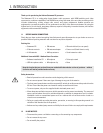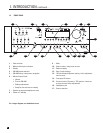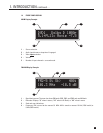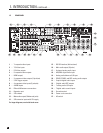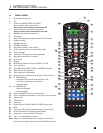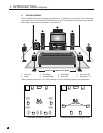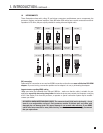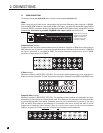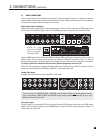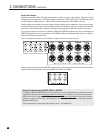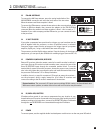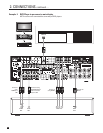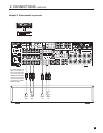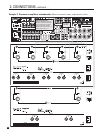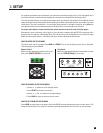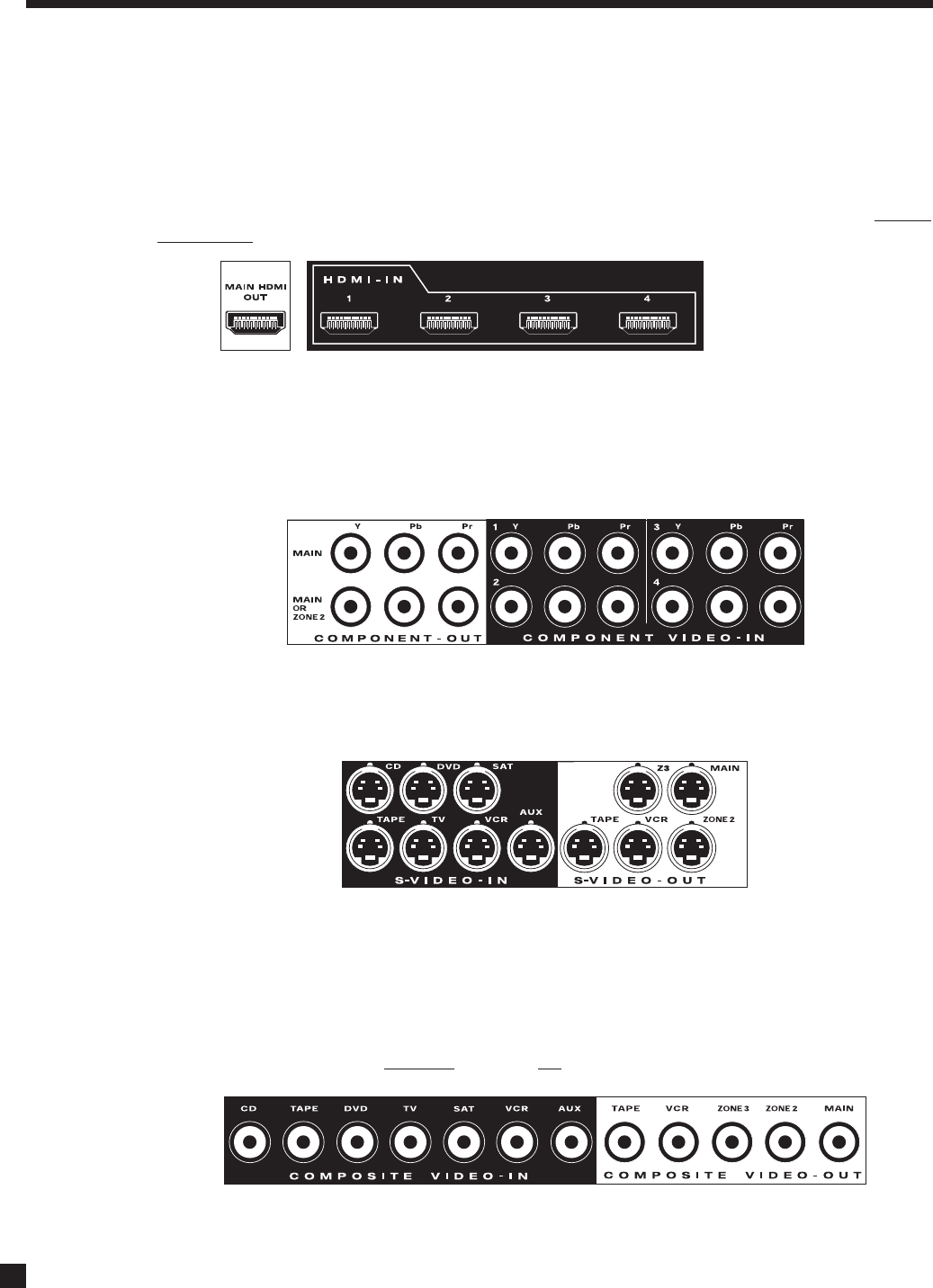
8
2.1 VIDEO CONNECTIONS
To configure inputs, see section 3.6 and to configure video outputs see section 3.1.
HDMI:
Video is sent with audio from source components to the processor. Maximum video resolution is 1080p/60.
Connect MAIN HDMI output to a display with HDMI or DVI input – one with High-bandwidth Digital Content
Protection (HDCP) is required to display copy-protected material. DVD players usually enable HDCP even on
home movies. If the source is protected, only HDMI video output is active (see section 4.14).
Component Video (analog):
Component video uses three coaxial cables and has a maximum resolution of 1080p when unprocessed or
480p when the source material is copy-protected with Macrovision. Maximum input resolution is 1080i/60 if
the input is processed or converted to HDMI. The second Component output can be used in MAIN,
processed or unprocessed, or in ZONE2.
S-Video (analog):
Maximum resolution is 480i (NTSC) / 576i (PAL). This connection keeps brightness and color separate for a
better picture than Composite. S-Video input can be converted to Component and HDMI output (MAIN only).
Composite Video (analog):
Maximum resolution is 480i (NTSC) / 576i (PAL). This traditional format combines the black/white and color
information for transmission on a single coaxial cable. To be displayed, the information has to be separated,
a process that degrades video quality. Composite inputs can not be converted or processed. If you use a
VCR, one with S-Video output is recommended. If a composite video source is black and white, it can be
plugged into a Component video’s Y input. If there is no choice but to convert a color source’s composite
output, a composite to S-Video converter
is needed (not an adapter turned backwards).
2. CONNECTIONS
HDMI switching requires
at least two seconds per
stage, i.e. at least four
seconds from source to
processor to display.




